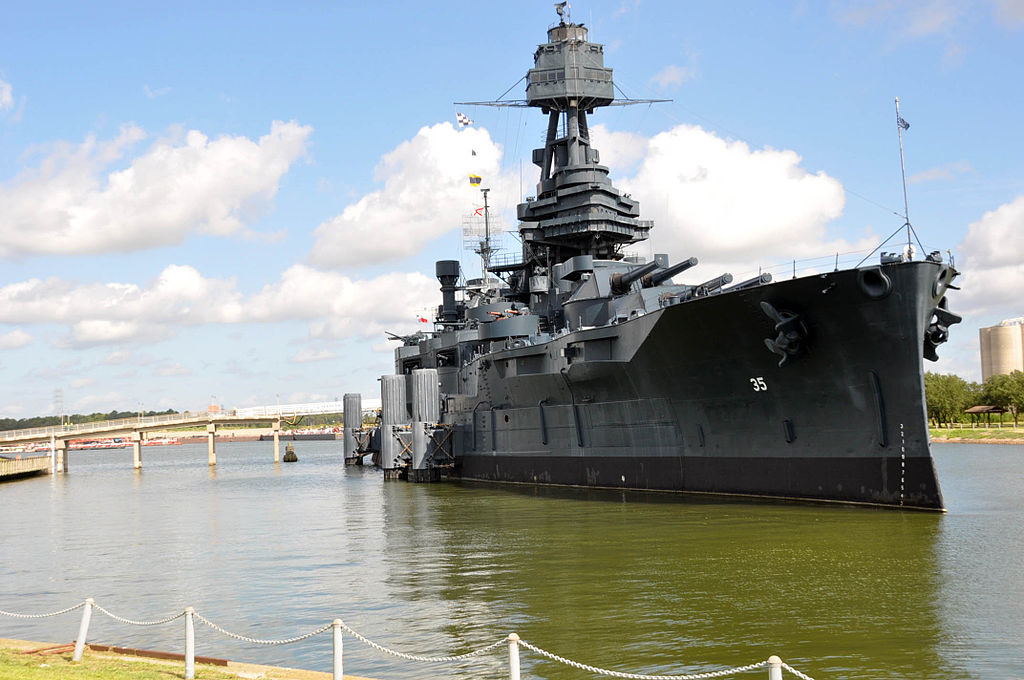Today, the USS Texas sits docked in the Houston Ship Channel as a floating museum. But on this date, 75 years ago, it was in in the English Channel, just off the coast of Normandy. Its crew had spent the previous day bombarding German forces onshore, softening them up for the D-Day invasion of Omaha Beach. It was a historic day in the life of a historic ship. Of all the U.S. battleships used in both world wars, only the Texas remains – but just barely. Thousands of gallons of water leak into the ship every day. Over the years, the state spent millions to keep it afloat. But as the bills piled up, two options emerged: either spend $100 million to permanently raise the ship from the water, or scrap it.
Bruce Bramlett, the executive director of the Battleship Texas Foundation, was set on finding a choice besides “the undoable” and “the unthinkable” – terms he coined for the project. And he might have done it. Last month, the state legislature appropriated $35 million to have the ship towed to a dry dock, get its hull repaired and then have it hauled back to Texas. The money is contingent on getting the go-ahead from engineers who are now studying whether the project is feasible.
“In order to do this, obviously, we first had to convince the legislature that it is doable. If it turns out it’s not, they’re not going to release a penny. And I wouldn’t blame ‘em,” Bramlett says.
Some have already questioned whether moving the ship can be done. Rep. Brian Babin’s district includes the site where the ship is docked. Earlier this week, Babin wrote an op-ed in the Houston Chronicle. In it, he warned that moving the Texas from its docked position through the 50-mile-long Houston Ship Channel could result in a worst-case scenario: the Texas sinking, and in the process, blocking one of the busiest ports in the country. But Bramlett isn’t deterred.
“If we can’t do this safely, that ship’s not gonna move a foot,” Bramlett says. “We’re not gonna move that ship if there’s a risk.”
If it can move, though, the question is, where will it come back to? The current site attracts about 80,000 visitors each year, which, according to Bramlett, doesn’t bring in enough revenue for the ship to pay for itself.
“That doesn’t even come close to covering the cost of operating the ship, let alone dealing with leaks,” he says.
So, right now, the state and Bramlett are taking bids from communities that would like to be the next home of the USS Texas – somewhere that can generate more revenue than its current spot. He hopes to make a decision by the end of the summer.
















